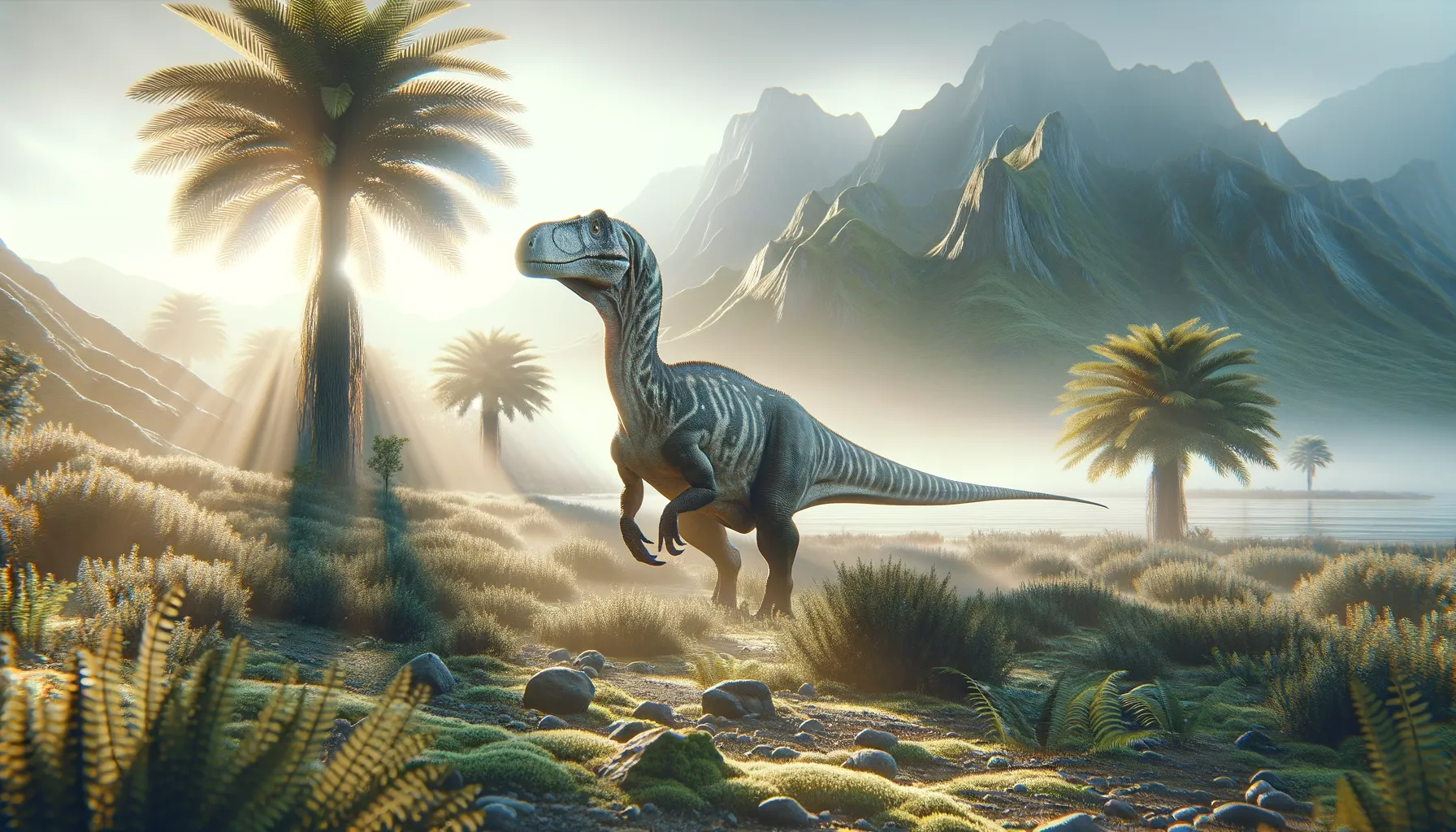
Cedrorestes
Discover the gentle giant of the Cretaceous!
Period
Cretaceous
Length
Around 7 meters long.
Height
Approximately 2 meters tall.
Weight
About 500 to 700 kilograms.
Cedrorestes was a herbivorous dinosaur that roamed the earth during the Cretaceous period. It belonged to the iguanodontian family, known for their duck-billed appearances. Fossils have provided insights into its plant-based diet and moderate size. Discovered in Utah, it adds vital information about dinosaur distribution in North America. Cedrorestes showcases a fascinating blend of common and unique traits seen in its relatives.
Diet
Cedrorestes was herbivorous, primarily feeding on low-lying plants and vegetation. Its teeth were well-adapted for grinding leaves, and it likely consumed ferns and cycads common in its ecosystem.
Hunting
As a plant-eater, Cedrorestes did not hunt other animals. Instead, it foraged for food, using its keen sense of smell and sight to locate plants. Its feeding behavior was more about survival and sustenance rather than predatory instincts.
Environmental challenges
Cedrorestes had to navigate a changing environment with fluctuating plant resources. As the climate shifted, it had to adapt to varying plant availability. Competition with other herbivorous dinosaurs for food was likely a constant challenge. It also had to stay vigilant against predators that roamed its habitat.
Speed
Moderate, not built for high speeds.
Lifespan
Estimated to be around 25 to 30 years.
First discovery
First discovered in eastern Utah in 2001.
Fun Facts
- Cedrorestes means 'Cedar robber,' named after the Cedar Mountain Formation in Utah where its fossils were found.
- It lived during the Early Cretaceous period, about 130 million years ago.
- Cedrorestes is believed to have been a herbivore, feeding on plants.
- Not much of its skeleton has been found, so scientists use similar dinosaurs to make educated guesses about its appearance.
- Cedrorestes is related to Iguanodon, a well-known dinosaur group.
- The fossils of Cedrorestes were first discovered in 2001, making it a relatively recent find in paleontology.
- Its discovery has helped scientists learn more about the diversity of dinosaurs in North America during the Early Cretaceous.
Growth and Development
Cedrorestes hatched from eggs and experienced rapid growth during its juvenile stages. Juveniles had to stay near adults for protection against predators. As they matured, their growth slowed, reaching full size at a few years old. Being a herbivore, access to nutritional food sources was crucial for its development.
Habitat
Cedrorestes inhabited woodlands and floodplains where vegetation was abundant. Its habitat was influenced by seasonal changes, affecting plant growth cycles. It likely migrated over short distances to find fresh feeding grounds. Water bodies in its habitat provided essential hydration and lush plant life.
Interaction with other species
Cedrorestes coexisted with various herbivorous and carnivorous dinosaurs. Its presence in mixed herds could have provided safety in numbers. While it was non-aggressive, it had to be cautious of predatory dinosaurs. Competition for food was common, leading to interspecies dynamics.
Natural lifespan
Cedrorestes individuals likely lived up to 30 years.
Reproduction
Cedrorestes reproduced by laying eggs in nests. Nesting sites were likely chosen for their safety from predators. Parental care may have included protecting the young until they could fend for themselves. Hatchlings were vulnerable and relied on their parents for initial survival.
Social behaviour
Cedrorestes may have lived in small groups, providing mutual protection. Social interactions included communication for warning against dangers. Group living facilitated the sharing of food sources and resources. Young ones learned from older group members through observation.
Fossil locations
Fossil remains of Cedrorestes were found in the Cedar Mountain Formation of Utah. These discoveries contributed to understanding the diversity of Cretaceous dinosaurs in North America. The Cedar Mountain Formation is a rich paleontological site with many dinosaur species. Ongoing excavations continue to reveal more about Cedrorestes and its contemporaries.
